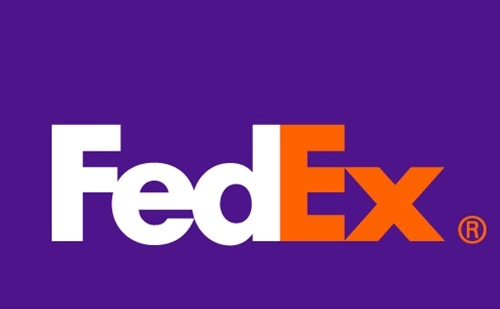FedEx stands as one of the top logistics corporations globally. One of the most well-known logistics brands in the country, it is headquartered in the US. Federal Express was the original name of FedEx, which also owned several other trademarks and companies, including Robert Express and RPS. The FedEx logo was affixed to each of these.
About FedEx
Federal Express was founded in 1971 because of Fred Smith, a charter pilot, and his “great idea.” It was founded in 1973 and became the first American company to generate $1 billion in revenue in its first ten years. With its official name of “FedEx,” which it adopted in 2000, FedEx is currently the largest express delivery company in the world.
FedEx is a leader in express transportation worldwide, providing dependable and punctual delivery services to over 220 nations and territories. With their cutting-edge technologies and aviation networks, they account for almost 99% of the global GDP.
FedEx provides individuals and businesses with various logistics and shipping services. FedEx Ground provides reasonably priced business and home delivery services in the US and Canada. FedEx Logistics offers all-inclusive logistics solutions, and FedEx Freight provides customizable freight services. FedEx Office is available for corporate printing, shipping, and other purposes. Finally, FedEx Dataworks improves operations and supply chains using network data for digital solutions.
Key Activities:
Package Handling: FedEx is an expert in the timely and safe handling and delivery of goods, ensuring they arrive at their destinations undamaged.
Transportation: To make it easier to transport packages and cargo, FedEx runs a sizable fleet of cars, trucks, and airplanes.
Technology Innovation: FedEx must continuously innovate to enhance the customer experience, track capacities, and optimize operations.
| Company Name | FedEx Corporation |
| Origin Country | United States |
| Founded | 1971 |
| Founders | Frederick W. Smith |
| CEO | Frederick W. Smith |
| Headquarters | Memphis, Tennessee, United States |
| Industry | Courier, Delivery Services |
| Key Services | Express Shipping, Freight Services, Logistics |
| Number of Employees | Over 570,000 (as of last update) |
| Revenue | US$ 84 billion (FY 2021) |
| Official Website | www.fedex.com |
Business Model of FedEx
Through wholly-owned subsidiaries, FedEx offers e-commerce, commercial services, and transportation. FedEx adds value by offering “high value-added” package delivery solutions in more than 220 countries. FedEx stays ahead of the curve by keeping its word to provide quick delivery with a reliability rate of over 99%.
For this reason, FedEx uses its very efficient plane-centered operational systems. FedEx has a hub-spoke operation model, meaning that its flights pass through one of its carefully positioned hubs rather than flying straight ahead. Products are thus immediately put on the shelf. This operating strategy ends up in shorter delivery times.
FedEx’s primary focus in its business strategy is to stay at the top of the logistics and delivery sector while making necessary adjustments to meet the ever-changing demands of the worldwide market. Thanks to this strategy, they have been able to stay competitive and current in a field that is always changing. FedEx targets the B2C and B2B segments, customizing its offerings to each group’s unique requirements.
FedEx Business Model: Operating Segments
FedEx has the following key operating segments:
- FedEx Express: the international network is in charge of providing air-ground express service that is time-sensitive.
- FedEx Ground: Provides easy home services or dependable business-to-business delivery. FedEx transcends regional boundaries to service customers and businesses worldwide. However, FedEx Ground is only available in North America.
- FedEx Freight: Offers a variety of LTL (less-than-truckload) options to meet the demands of its clients.
- FedEx Providers: It uses technology to solve challenges with worldwide supply chains and e-commerce to meet its customers’ needs.
Revenue Streams:
In addition to the four primary and crucial categories, FedEx Office and FedEx Logistics add to the overall revenue.
Revenue streams include
- Shipping Fees: Shipping fees, which it charges consumers for the delivery of packages and parcels, is one of the revenue streams. These fees account for a sizeable amount of FedEx’s total revenue.
- Value-Added Services: FedEx provides various value-added services that increase income, including packaging, insurance, freight forwarding, and customs clearance.
Conclusion
FedEx Corporation is an international courier delivery firm based in Memphis, Tennessee, well-known for providing overnight delivery and shipping services. Since its founding in January 1998, FedEx has expanded to rank among the top providers of local delivery services and courier solutions worldwide.















